
Types of suit fabrics
Men’s Suit Fabric Types
Today, a suit refers to a multiple-piece set of clothing that is usually the dressiest or nicest thing in a man’s closet – unless he owns a tuxedo. While there are different types of suits, the most well known is a business suit and typically consists of 2 items – a jacket and pair of pants. However, dressier suits consist of a third item – a vest, or waistcoat.
The name itself, suit, has its origins in a set of clothing that consists of even more items. A suite was a set of clothing that could consist of 6 different garments and was popular for English royalty in the 14th Century. A robe, another term for which the meaning has changed over the years, contained numerous suites.
Over the next half a millennium, a suite, or suit, gradually lost pieces until it became only 2 or 3 items – luckily for men everywhere. There are a couple of things that have remained the same over the years. The first is that a proper suit should be tailored. Second, that there are several different suit fabric types – but always the same type across a single suit.
Materials
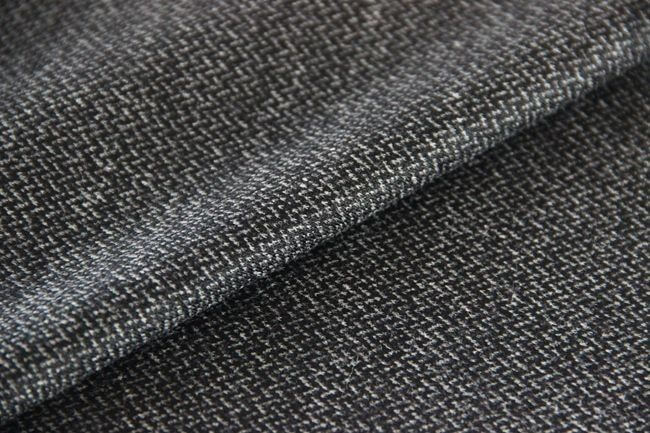
Wool
Wool was an obvious choice of general clothing material ever since the ancient civilizations of Mesopotamia, when the wool was worn still attached to the skin of the sheep.
People started to wear wool primarily because of its ability to not only keep a person warm, but also because it could keep someone cool. Additionally, wool absorbed water and is a durable material.
There are two dominate weaving patterns of wool, or any material for that matter – plain weave, which is an over-and-under pattern, and twill weave, which is made by interlacing the vertical and horizontal yarns creating a slanted pattern.
Perhaps due to its practical uses, wool stood the test of time and likely first caught on in England, especially after the invention of spinning. Wool eventually became the classical suit fabric type – though there are variations in how it is processed.
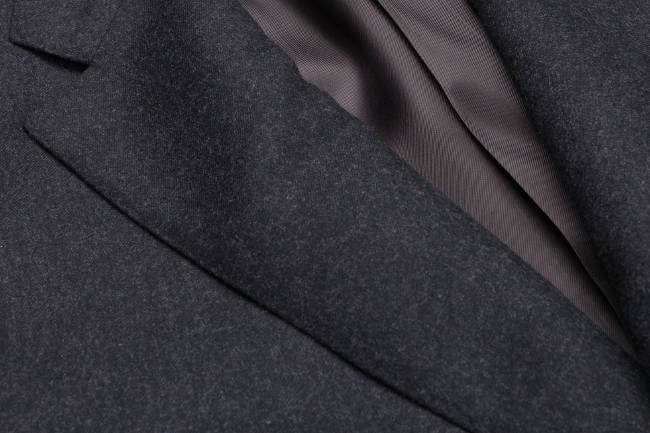
Flannel
The main benefit of flannel clothing, suits included, is how well it moves with the wearer. It is a very flexible material. Traditionally, flannel was made of wool, but you can also find flannel suits made of cotton or artificial material.
A drawback of flannel suits is that they must be worn sparingly as pilling, what happens with the fibers break and stick on the surface, can occur when subjected to continuous friction. For this reason, it’s recommended to have at least two pairs of pants for every flannel suit jacket.
Worsted Suitings
Worsted material is a high-quality wool that is especially light. Suits made of worsted material and designed to be worn during the hot summer months might weigh less than 8 ounces.
There are many worsted suit fabric types, each identified by the weave. The most well known of which are in the adjacent accordion.
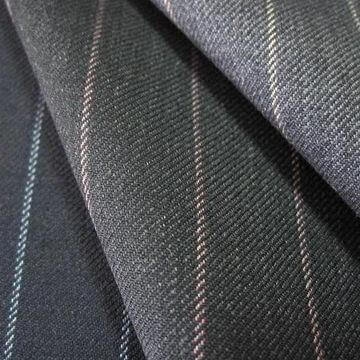
Houndstooth
A twill weave that is made with four dark threads and four light threads. They are woven in a way that creates a checkered pattern or, according to some, a pattern that resembles the teeth of a dog. Hence, the name.
Barleycorn
Also a twill weave made by contrasting the vertical and horizontal threads. This results in tiny triangles that resemble kernels of corn, which is where the name comes from. Barleycorn suits are appropriate for business or daily wear but is also a popular pattern for sports jackets, usually when the material is lambswool or cashmere.
Herringbone
Vaguely resembling the bones of a fish, herringbone is a twill weave made by threads that run to the left and the right alternatively which results in a v-shape. Herringbone is also popular for suits and sports jackets.
Pinstripe
Perhaps the classical suit pattern, pinstripe is a plain weave achieved with contrasting yarns – usually white and black but can include grey or dark blue.
Pick-and-Pick (Sharkskin)
Another twill weave worsted suiting that is woven in a way that creates a salt and pepper-like effect. Typically a dressier pattern that is usually popular with businessmen.
Glencheck
A twill design made with two dark and two light stripes alternating with four dark and four light stripes creating a crossing pattern of irregular checks. The colors are usually black or grey and white.
Saxony
Tweed
Tweed suits are a class of coarse and colorful suits. Tweed, originally called tweel then later tweed thanks to a clerical error, was a Scottish version of twill. It slowly caught on in England and therefore, the rest of the world.
There is also an Irish tweed which is more colorful with larger patterns versus the Scottish version.. Examples of Tweeds are:
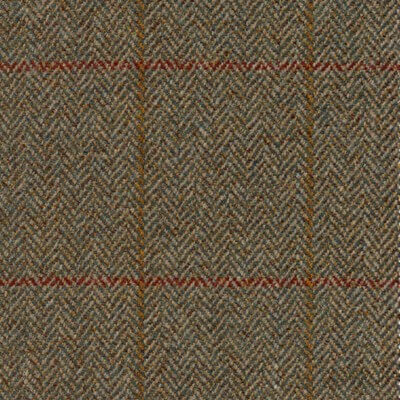
Harris
A rugged and bulky tweed. A Harris tweed suit would typically be too warm for summer wear. The Harris Tweed Association certifies Harris tweed that actually comes from Outer Hebrides of Scotland.
Shetland
Cheviot
A fishbone-patterned tweed, straight not v-shaped like herringbone, that is grainy and heavy. It is a classical weave usually made from wool.
Plaid
A well-known tweed thanks to its distinctive box-like pattern achieved with cross-hatched yarns. Plaid suits are not suitable for formal or business situations unless it’s a minimally contrasted set of colors like grey, black and white.
Gabardine
Similar to Saxony, Gabardine is almost a worsted yarn that is very tightly woven – to the point that it’s almost water resistant. It consists of more vertical threads than horizontal threads.
Cotton
The material cotton comes from the seed pod of the cotton plant after it bursts displaying fluffy fibers. After being separated from the cotton boil, the raw cotton is processed into yarn which is then weaved into fabric.
Cotton suits are durable and practical largely because they can be washed repeatedly without damage. Plus, cotton is easily dyed. Because cotton does not keep the wearer particularly warm, they are usually only seen during the warmer months.
Examples of cotton suit fabric types are in the adjacent accordion.
Seersucker
Made with fibers in which the tension alternates. Seersucker suits were originally made with silk in India and the name is derived from the Hindi word for ‘milk and sugar.’
Velvet
Velvet suits are for very special occasions, should not be worn at all, or only as a jackets – in which case it would likely be referred to as a smoking jacket.
Corduroy
If worn properly, a corduroy suit can look great but suits made of the thick-ribbed fabric may forever be associated with college professors.
Denim
It’s hard to imagine another fabric that is as American but the name is actually derived from the French city Nimes. Not the first material that comes to mind when one thinks of a suit and therefore more of a fashion statement that something for business wear.
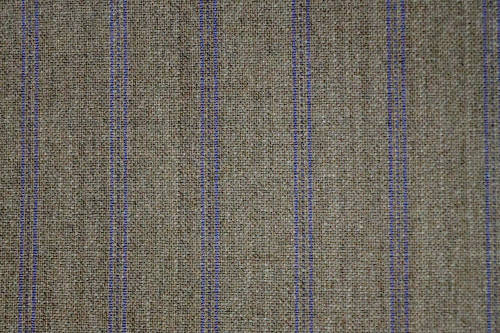
Linen
Linen suits are known for being exceptionally comfortable in hot weather and for being useless when it’s cold. While it can crease easily, which can affect how dressy the suit looks, some wearers prefer the creases as they are natural to the material.
Made by extracting the fibers from the stalk of the flax plant. Even with automation, the process is labor intensive. There are two types of linen suits worth noting.
Irish linen – Irish linen creases less because the fabric is woven in a compact way. Irish linen suits are typically solid colors and are still reserved for summer wear.
Italian linen – Italian linen is noticeably softer than other types of linen and is said to have more character due to the way it is woven. Also reserved for summer time and creases easier which again, limits how appropriate it is for dressier occasions.
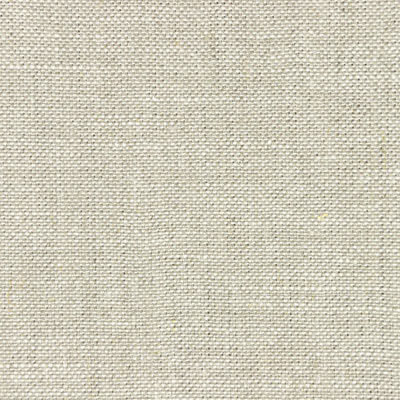
Silk
When one thinks of silk suits, the mind probably travels to ancient China and the tunics or robes that are known for the era. China, after all is where silk of the Bombyx mori caterpillar was discovered.
China still produces most of the world’s silk. The process is intricate and requires the cocoons of several caterpillars.
Silk fabric can vary by the thickness of the material, twist degree, and the weave. Here are some silk suit fabric types:
Satin – Occasions for which satin suits are appropriate are rare. Satin is noted for having a dull side and a glossy side, the latter of which is how you will know the suit is made of satin. Infrequently used except for waistcoats or formal evening wear.
Shantung – More commonly used for dresses, men’s suits made of Shantung, which is stronger than normal silk, are also reserved for waistcoats and formal wear. The fabric is coarser but softens with laundering.
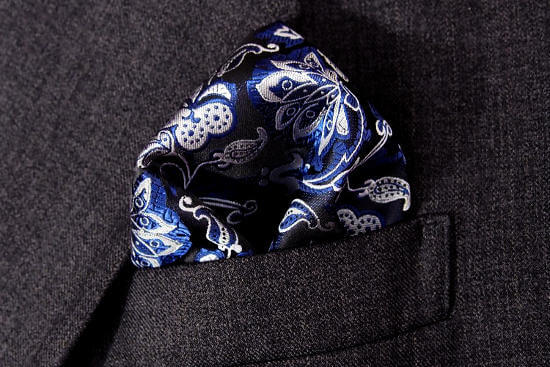
Precious Fibres
Few people will own a cashmere suit but it’s a notable material and worthy of discussion. Suits made of the following precious materials are reserved for those familiar with luxury or high fashion:
Cashmere
From the undercoat of an Asian mountain goat, cashmere is very light yet durable. Cashmere suits can be appropriate for day wear or business suits. In both cases, understandably, they are very sharp.
Mohair
Mohair comes from the hair of the Angora goat and makes a dashing coat. Noted for its sheen, the feel of the suit is crisp and is great for business wear or formal wear.
Baby Alpaca
- A suit made of the coat of a baby alpaca is distinctively soft, silky and of an exception quality. It is wonderfully light yet suitable for cold weather.
Vicuna
Rather tragically, the vicuna is killed for its fleece. It is expensive due to the fact that it is soft and warm as well as because the vicuna is elusive.. Vicuna is rarely actually a suit, but rather a jacket.

Leave a Reply